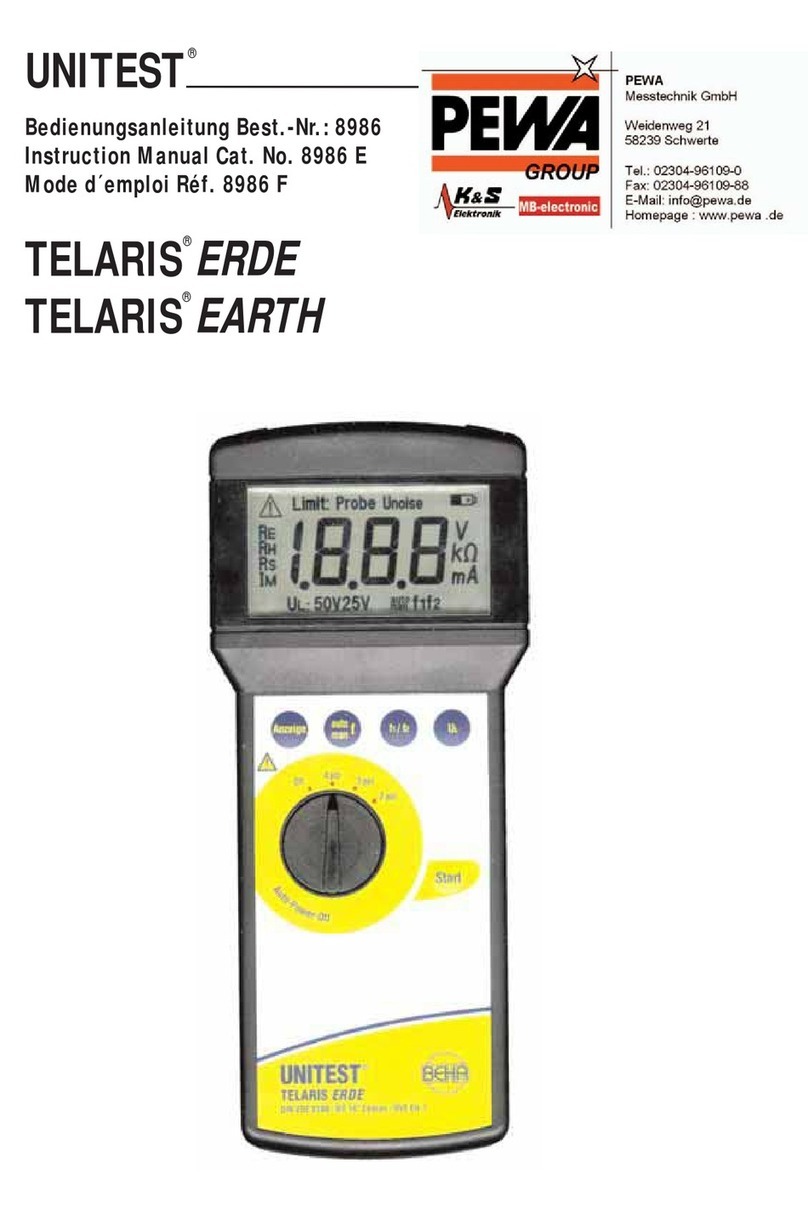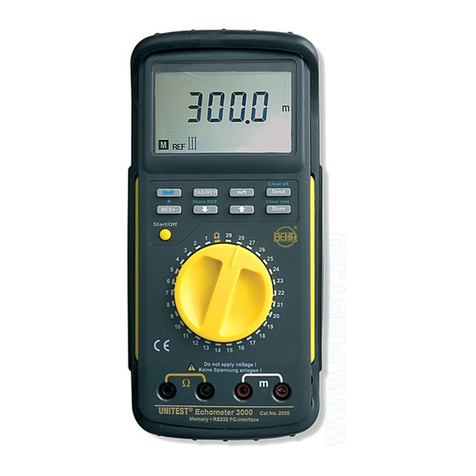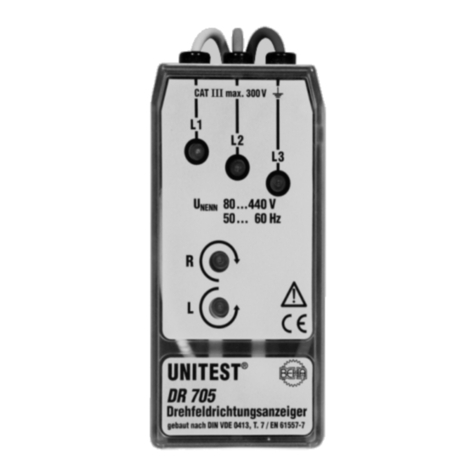English
9
General Information about RCD Tests
5.2 General Information about RCD Tests
The contact voltage UB and the trip time t required
by the RCD to disconnect the subsequent current
circuit from the mains represent important mea-
surement units for the asessment
of an RCD.
For this reason, IEC 60364 prescribes that
a) the maximum allowable value for the contact
voltage (25V/50V) may not be exceeded within
any system during tripping at nominal residual
current.
b) the RCD must trip within a time limit of 300ms.
The task of an residual current device (RCD) con-
sists in switching off a system within a defined time
period after an error prior the contact voltage reach-
es the permissible limit value of 25V / 50V.
The system testing should be started by carrying out
a visual inspection, in particular of the protective
earth connection.
1. Within the IT system, the protective earth con-
ductor doesnot have to be connected with the
PEN but with the protective earth connection.
2. The protective earth conductor must be connect-
ed to the PEN prior to the RCD within the TN sys-
tem.
3. An insulation measurement as described in Sec-
tion 5.2 must be performed. In particular it must
be proved, that there is no connection between N
and PE following the RCD.
4. Proof regarding the low impedance connection of
equipotential bonding conductors in compliance
with Section 5.4 must be available.
Time-delayed residual current devices trip at
nominal residual current within 130…500ms,
for double nominal fault current within
60…200 ms. Such RCDs are implemented as
main residual current protection devices
(please refer to IEC 61008-1) and are marked
with the symbol “ S ”.
The contact voltage represents the voltage pre-
sent during an insulation error between two si-
multaneously touchable components.
At a measuring circuit without probe, available
voltages between PE and earth can influence
the measurement.
Before using the N-conductor as probe check
that all neutral points have low ohm resistance
to the main neutral line. A available voltage of
the N conductor to the arth can influence the
measurement.
The measuring function uses the N-conductor as a
probe. Check first the connection between the neu-
tral point of the distribution system and earth be-
fore the test is started. A possible voltage between
the N-conductor and earth may influence the mea-
surements.
Leakage currents by preconnected loads can
influence the measuring
Attached loads or operating supplies which
contains capacitors or circulating machines
can elongate the trip time.
Any test and measurement procedures in cir-
cuits equipped with residual current devices
should only be performed after having con-
sulted the operator terminals (data processing
systems, material processing, motors, etc.).
Prior to testing, we recommend all loads are
switched off as they could falsify the measure-
ment result.
The protective earth must be free of external
voltage for the RCD test. However if an extra-
neous voltage is present, the instrument only
indicates the voltage VC having been generat-
ed by the measurement. The measurement in-
terruption caused by excess of UL by VC is only
generated by the actual voltage present be-
tween the neutral conductor (N) and the pro-
tective earth (PE).































